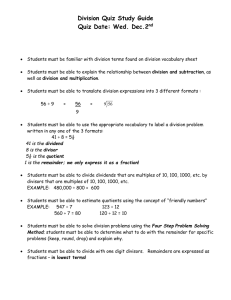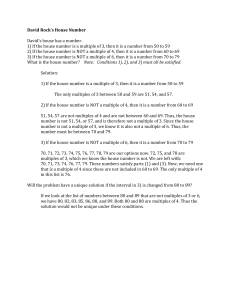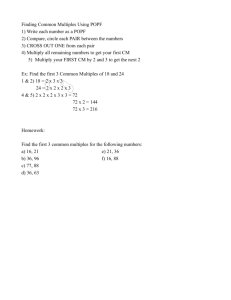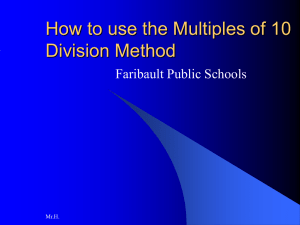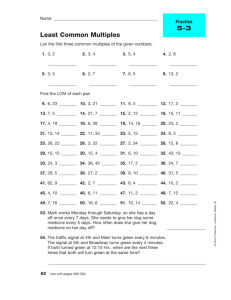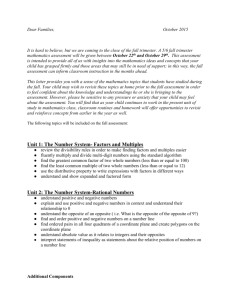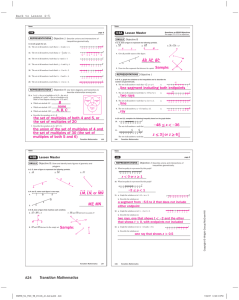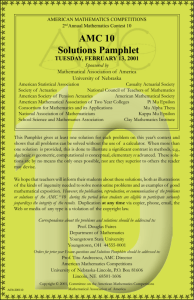Study Link Help - Everyday Mathematics
advertisement
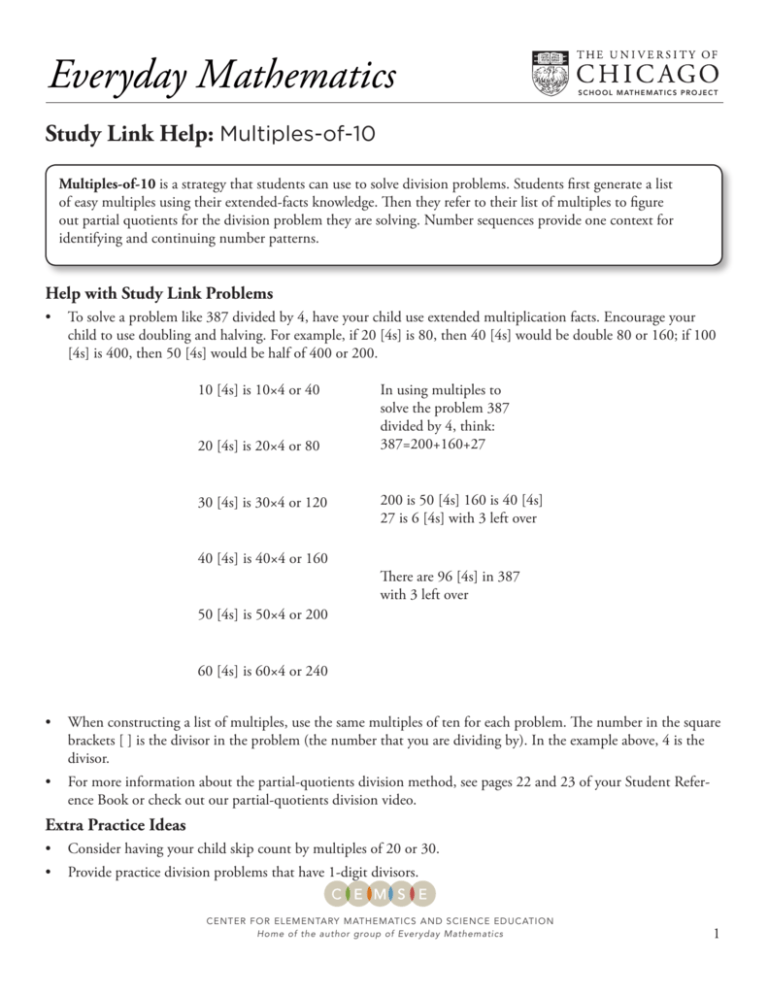
Everyday Mathematics S C H O O L M AT H E M AT I C S P R O J E C T Study Link Help: Multiples-of-10 Multiples-of-10 is a strategy that students can use to solve division problems. Students first generate a list of easy multiples using their extended-facts knowledge. Then they refer to their list of multiples to figure out partial quotients for the division problem they are solving. Number sequences provide one context for identifying and continuing number patterns. Help with Study Link Problems • To solve a problem like 387 divided by 4, have your child use extended multiplication facts. Encourage your child to use doubling and halving. For example, if 20 [4s] is 80, then 40 [4s] would be double 80 or 160; if 100 [4s] is 400, then 50 [4s] would be half of 400 or 200. 10 [4s] is 10×4 or 40 20 [4s] is 20×4 or 80 30 [4s] is 30×4 or 120 40 [4s] is 40×4 or 160 In using multiples to solve the problem 387 divided by 4, think: 387=200+160+27 200 is 50 [4s] 160 is 40 [4s] 27 is 6 [4s] with 3 left over There are 96 [4s] in 387 with 3 left over 50 [4s] is 50×4 or 200 60 [4s] is 60×4 or 240 • When constructing a list of multiples, use the same multiples of ten for each problem. The number in the square brackets [ ] is the divisor in the problem (the number that you are dividing by). In the example above, 4 is the divisor. • For more information about the partial-quotients division method, see pages 22 and 23 of your Student Reference Book or check out our partial-quotients division video. Extra Practice Ideas • Consider having your child skip count by multiples of 20 or 30. • Provide practice division problems that have 1-digit divisors. CENTER FOR ELEMENTARY MATHEMATICS AND SCIENCE EDUCATION Home of the author group of Everyday Mathematics 1
